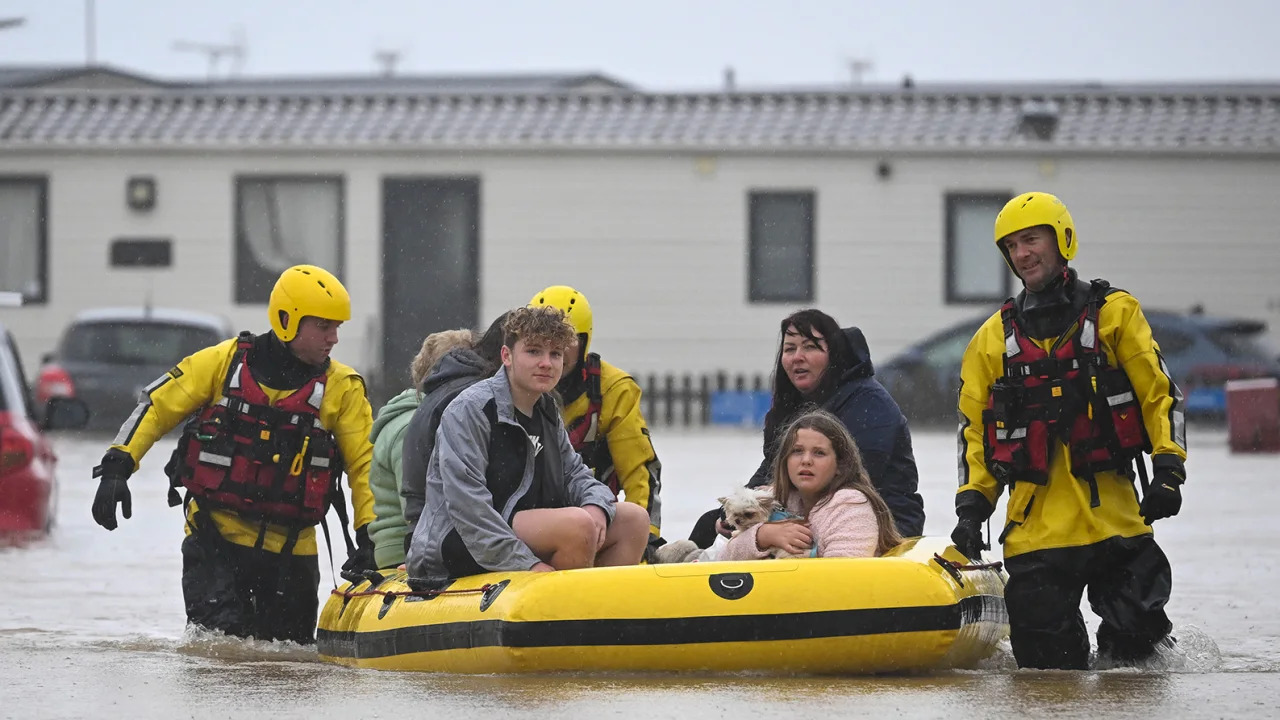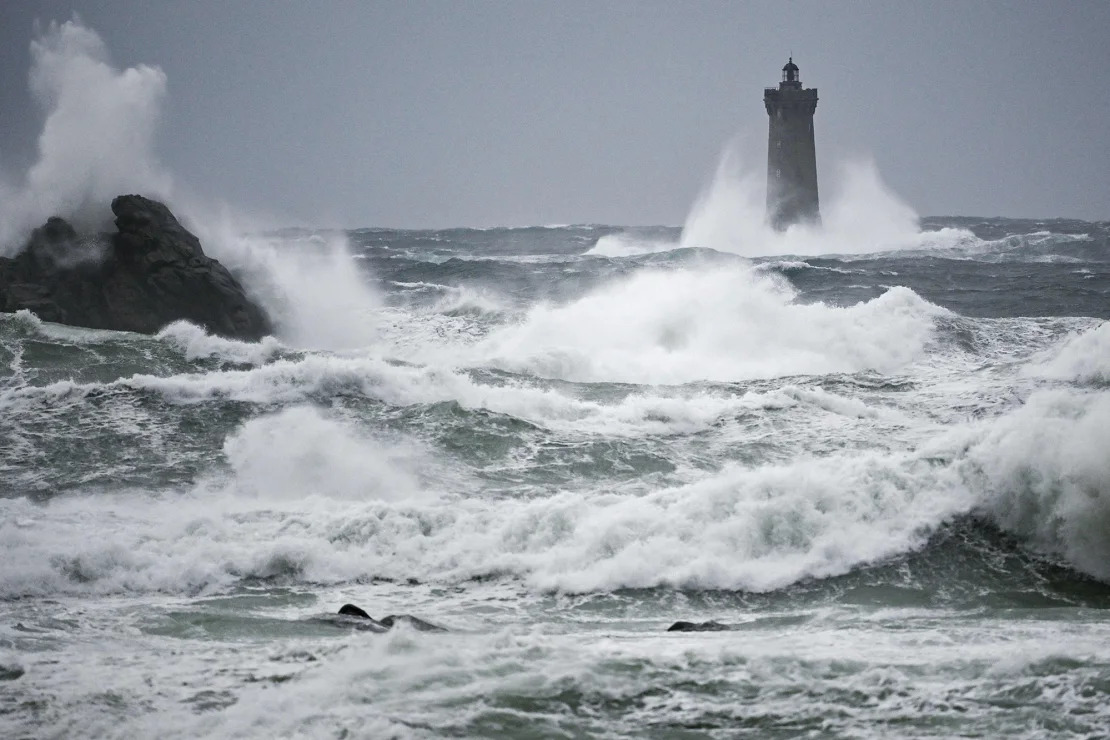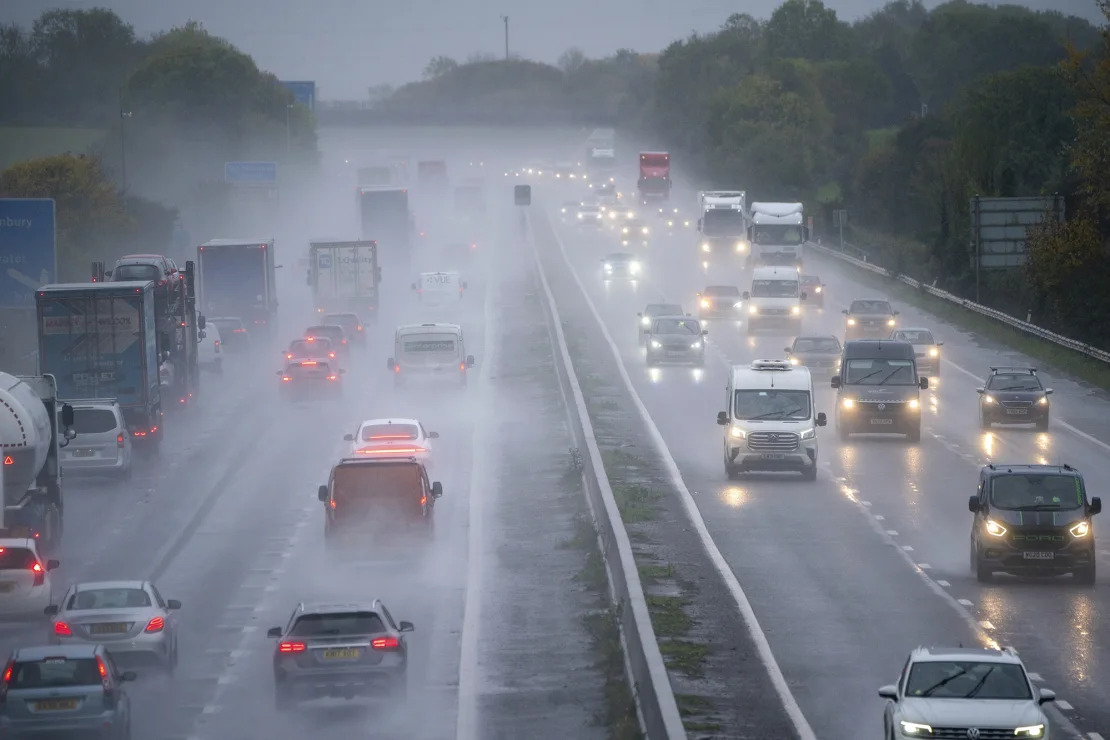
Storm Ciarán has brought hurricane-strength winds to France, the Channel Islands and southern England, leaving more than a million people without access to electricity and forcing hundreds of schools to close.
The storm has claimed at least four lives, two in France and a further two in Belgium.
In France, 1.2 million people were left without power as winds of over 120 kph (75 mph), and gusts of more than 200 kph (124 mph) hit the department of Finistère in the northwest, according to the country’s meteorological agency Meteo-France. The wind speeds broke several local records.
“The very violent winds and gusts which followed one another throughout the night had the effect of causing many trees, branches and electrical and telephone lines across the entire road network to fall to the ground,” a statement from the Finistère government said.

Around 780,000 of those without power are in the northwestern region of Brittany, French energy supplier Enedis said in a statement. Fallen trees and electricity pylons uprooted by the storm were to blame for the cuts. Enedis has mobilized around 3,000 workers and 30 helicopters to re-establish power to affected areas.
A truck driver was killed was hit by a falling branch while driving, according to the French Transport Minister Clément Beaune in an interview with French broadcaster Franceinfo. The second victim was a 70 year-old man died in Le Havre after falling while attempting to close his balcony shutters, according to France’s interior ministry.
Meanwhile, in Belgium, a 65-year-old woman and a 5-year-old child were killed in Ghent after being hit by branches in two separate incidents, the East Flanders public prosecutor’s office said in a statement.
The storm has also hit the British Isles and Channel Islands, where red alert warnings are in place. On the island of Jersey, all schools and the airport were closed, according to the government’s website. In the southwestern county of Cornwall, 8,500 people were without power, the local council said on X (formerly Twitter), trees were blocking dozens of roads, and more than 100 schools were closed. Local media images showed waves crashing into and breaching sea walls in the southwestern English county of Cornwall.


The UK’s Met Office has warned that the combination of strong winds and rain posed a “danger to life” from flying debris, as trees and homes are expected to suffer damage. Large waves could damage coastal roads and properties.
Disruption to travel is expected. Several rail companies have warned people not to commute, even in the capital, although the Met Office said late Thursday morning that the storm’s path had moved further south than earlier projections showed. The strongest winds will likely be confined to areas closest to the coast, it said.
Storm Ciarán follows less than two weeks after Storm Babet, which brought strong winds, heavy rainfall and flash flooding to parts of Scotland and northern and central England, killing several people.
The human-induced climate crisis is making some storms more frequent and intense. As the Earth’s atmosphere warms, it is able to hold more water vapor — so when it rains, it rains much more intensely.
“There are a lot of attribution studies and other lines of evidence showing that autumn/winter storms like this are more damaging because of climate change,” said Friederike Otto, senior lecturer in climate science at the Grantham Institute, Imperial College London. “The rainfall associated with these types of storms is more severe due to climate change, and the storm surges are higher and thus more damaging due to the higher sea levels.”